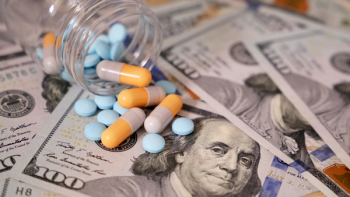
A (New) Tale of Two Pricing Schemes
The UK has had in place what amount to two pricing schemes for branded medicines for years. But with major changes to both schemes set out in 2018, it’s now a new tale of two pricing schemes. Leela Barham reports.
The UK seems to be fixated on doing things differently. Not only is that the case when it comes to European matters, it’s always been the case for the pricing and reimbursement of branded medicines. The UK has had in place what amount to two pricing schemes for branded medicines for years but with major changes to both pricing schemes set out in 2018 and implementing on January 1, 2019, it’s a new tale of two pricing schemes. Leela Barham looks at what companies should know about how the two schemes are similar, yet different.
A new voluntary scheme
During 2018 the Department of Health and Social Care (DHSC) negotiated with the Association of the British Pharmaceutical Industry (ABPI) on the successor to the 2014 Pharmaceutical Price Regulation Scheme (PPRS). Forms of the PPRS have been in place since 1957 but as you’d expect things change over time. In 2018 both sides – and NHS England (NHSE) as a new negotiating party - agreed to a new incarnation of the PPRS; the 2019 Voluntary Scheme for Branded Medicines Pricing and Access (or VPAS). The 2019 VPAS formally started on January 1, 2019 and will run until December 31, 2023.
As the title of the new voluntary scheme makes far clearer than predecessors it is voluntary; companies don’t have to be in it if they don’t want to be. VPAS requires companies to make a payment to the DHSC based on a percentage of their sales made to the NHS (there are some exemptions). These payments are required because the scheme has limited growth in the NHS branded medicines bill to two per cent a year for the five years of the 2019 VPAS; payments make sure that spend is capped.
A new statutory scheme
The DHSC had been laying some of the ground work for the negotiation of VPAS by looking at the alternative when companies choose not to be members of the voluntary scheme. New legislation was passed in 2018, The Branded Health Service Medicines (Costs) Regulations 2018. This set out a new version of the Statutory Scheme and required companies to make payments that were aligned with the percentage payments that members of the 2014 PPRS had to make. This replaced price cuts under previous statutory schemes. Amendments were made in December 2018, with those coming into force on January 1, 2019.
The same, yet different
The DHSC has set out to ensure what it calls ‘broad commercial equivalence’ between the schemes. In large part this is because companies can compete with others who are in the other scheme to them, and when this happens, they should be able to do with on broadly a level playing field for competition to play out. Yet the DHSC also concedes that broad commercial equivalence is still possible even with differences across the schemes.
Membership
At least at the moment, both schemes have not seen major changes in membership. VPAS has 172 members, the same number as under the 2018 PPRS early in 2018, the Statutory Scheme has 22 companies that make payments to the DHSC. There will be more companies under the Statutory Scheme but many may not need to make payments because they meet certain exemptions.
At the policy level the important difference is that the VPAS covered an estimated £9,381m ($12,110m) in sales in 2018, whereas the Statutory Scheme covered £987m ($1264m), according to DHSC figures. VPAS is really where the money is at; it’s also where there is collective bargaining power, channeled via membership of the Association of the British Pharmaceutical Industry (ABPI). It was the ABPI that negotiated on behalf of industry for the voluntary scheme.
The ABPI is also the party who can bring issues to the table in reviews of the running of the VPAS in six monthly reviews. That keeps – potentially – the door open for further talks and changes during the lifetime of VPAS, albeit changes can never be radical to ensure the integrity of a deal that should last five years. Changes will stay under the banner of ‘operational’, if any are made. That is not the case for the Statutory Scheme.
Whilst there is a requirement for an annual review of the Branded Health Service Medicines (Costs) Regulations, if the
Payment percentages
Table 1 sets out the payment percentages under both Schemes, where they are available. VPAS payment percentages reflect the cap on NHS branded spend of 2 per cent in nominal terms over the lifetime of the scheme, whereas the Statutory Scheme reflects a cap of 1.1 per cent nominal growth.
Table 1: Percentage of sales to be paid to DHSC under VPAS and the Statutory Scheme
2019
2020
2021
2022
2023
VPAS
9.6%
14.2%
-
-
-
Statutory Scheme
9.9%
14.7%
20.5%
-
-
On the face of it, and taking the perspective of when companies had to decide whether to join the VPAS or be subject to the Statutory Scheme in December 2018, it was Statutory Scheme that gave more certainty for percentage payments. But, and it’s a big but, the DHSC can change the payment percentages every year (or more often), under the Statutory Scheme. It just needs to consult (and the DHSC knows very well how to tick the box of consultation).
Payment percentages are only available for the first two years of the 2019 VPAS; only the 2019 percentage is fixed. Future payment percentages, and a confirmed 2020 payment percentage, will be announced after companies supply their sales data and the DHSC runs the numbers (and there are a lot of numbers to be run and a lot of data for companies to supply, that’s a commonality across both schemes). This will include some recalculation for the year five payment because of a lag in sales data; companies could therefore face the need to sort out any under-or-over payments with the DHSC in 2025.
Essentially both schemes could see changes in what companies need to pay, but it’s only the VPAS that gives companies a predictable (if complex and for individual companies, opaque) way of calculating payment percentages. Small comfort maybe.
Common across both the 2019 VPAS and the Statutory Scheme as it operates now is the core mechanism of a forecast of NHS spend on branded medicines. Everything starts from the view that the bill will go up at a rate that is higher than the Government wants it to, thus necessitating the need for a cap.
Exemptions
Since both schemes operate on the basis of a percentage payment against sales, it’s in the exemptions that differences emerge. Particularly important is the treatment of new medicines; under VPAS a company launching a new active substance doesn’t need to pay a percentage of those sales for the first three years after launch. No such new medicine exemption is available under the Statutory Scheme.
Table 2: Exemptions to company payments under the VPAS and Statutory Scheme
Exemptions
VPAS
Statutory Scheme
OTC presentations
Yes
Yes
Parallel imports*
Yes
Yes
Small company sales: companies with annual sales of health service medicines <£5m
Yes
Yes
Exceptional central procurements
Yes
Yes
Centrally procured vaccines
Yes
Yes
Medium company sales: companies with annual sales of health service medicines between £5m and £25m where first £5m of sales are exempt
Yes
No
Sales of new active substances, first three years after launch**
Yes
No
Sales under Agreements
No
Yes
* Whilst a company won’t pay a percentage of the sales of their drugs that have been parallel imported, in VPAS parallel imports are included in the calculation of NHS sales of branded medicines. In part this was to address a driver of volatility in the 2014 PPRS. Essentially this means that the industry takes on more risk than the Government when it comes to PIs in the 2019 VPAS than the 2014 PPRS.
** These sales count towards total NHS spend on branded medicines.
New medicines
Worth noting too in the context of differential treatment of new medicines is that the Statutory Scheme includes provisions that could allow the Secretary of State for Health to set a maximum price for a new medicine. VPAS offers freedom of pricing, although such freedoms are moderated by not only NICE and cost effectiveness thresholds but also by the prospect of needing to do deals to secure uptake. So, in reality, pricing new medicines is limited in both schemes. Collectively the policy intention is to make companies be reasonable in setting a price whichever scheme they are in.
The access agenda
From a policy perspective it’s really the access agenda where VPAS stands apart. There is a whole chapter dedicated to access, uptake and outcomes. Unlike the payments side, it’s the access side where there is less precision, and more ambition.
The ambition is that there will be a further improvement in patients’ outcomes and health gain from medicines spend. Promises are made about enhancing horizon scanning, improving engagement with NHS England – key as they are essentially the payer for specialized medicines and set agendas that influence uptake across the NHS – more and faster appraisals from the HTA agency, the National Institute for Health and Care Excellence (NICE), commercial flexibilities, transparency in tenders, as well as promoting uptake.
Access is however not completely missing from the Statutory Scheme; VPAS explicitly allows non-members the opportunity to use Patient Access Schemes (PAS) and commercial flexibilities too, when developed and implemented. PAS schemes are a way for companies to secure a positive NICE appraisal, often through a confidential price discount.
Between a rock and a hard place
For individual companies it might well feel like choosing between the VPAS and the Statutory Scheme is like choosing between a rock and a hard place. It may also be that few companies have the appetite for working through the details of each scheme and making a leap; the timings for the details of both schemes meant that companies had little time to digest what changes to both the voluntary and the Statutory Scheme would mean for them (not to mention the distraction of planning for Brexit). The details of the changes to the Statutory Scheme were confirmed in the Government’s
What will be telling is whether there will be any switching between schemes in the future, as companies find out what it the commercial realities really feel like given changes that only came in on January 1, 2019. The access side may well take longer to bear fruit.
Leela Barham is a freelance health economist and policy expert. She has published in peer-reviewed journals and presented at national and international conferences. She has provided advice to the Department of Health and Social Care on policy on pricing of branded medicines to inform the negotiation of a successor to the UK’s Pharmaceutical Price Regulation Scheme (PPRS), the Voluntary Scheme for Branded Medicines Pricing and Access (VPAS), as well as worked with patient groups, the NHS, pharmaceutical companies and many others internationally on the economics of healthcare and pharmaceuticals. Contact Leela on
Newsletter
Lead with insight with the Pharmaceutical Executive newsletter, featuring strategic analysis, leadership trends, and market intelligence for biopharma decision-makers.





